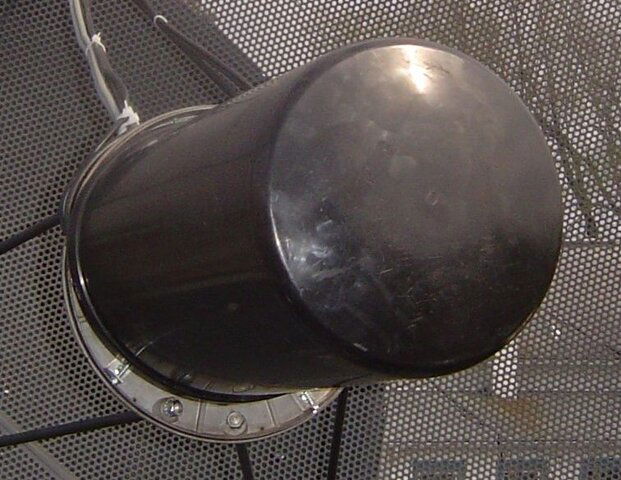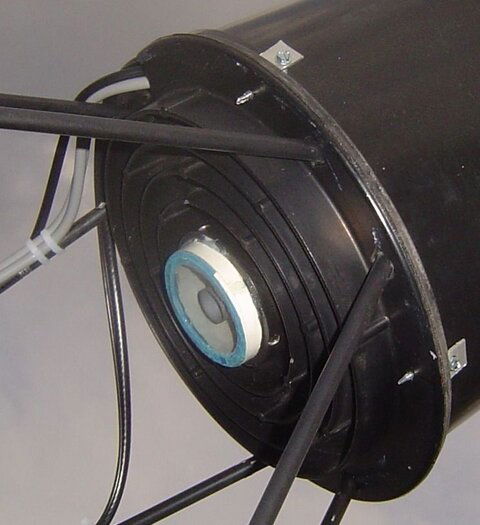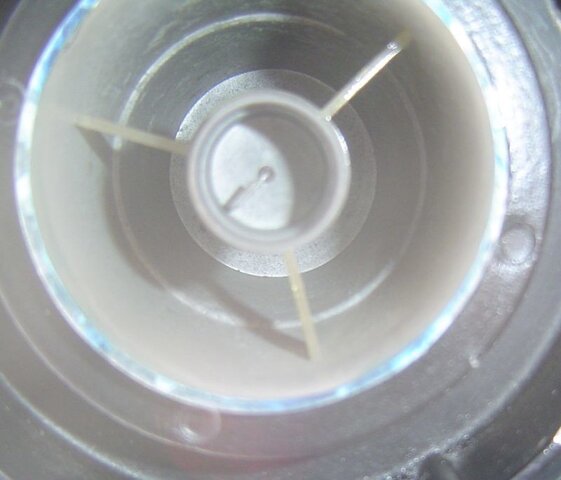



Is the off-white tri-part plastic piece that fits around the Ku cylinder, one of those dialectic inserts for circular C-Band?
It is a signal sucking momma!!
I bought a brand new magnetic angle finder today, and it says the elevation of the dish is at 37 degrees.
I checked the back of the dish and it says 42 degrees which indicates 5 degrees of declination built into this dish.
The old inclinometer says the elevation on the dish is at 39 degrees on the back of the dish, it is at 46 degrees. If you subtract 39 from 46, it shows 7 degrees of declination which is more than likely a false reading.
One thing to remember, the deeper the dish and the larger the dish, the narrower is the central reception beam pattern (see side lobe discussion page); the implications of this is that the effect on installation is that the narrower a main beam then the more difficult it is to focus on the satellite while tuning a dish. This is not appreciably noticeable under strong footprints or sizes under 3.0m, but is noticable when tracking Ku satellites and when using a larger dish. A larger dish, for instance a 4.0m diameter dish, has a much more narrower main beam pattern than a 3.0m dish and you have to be more 'dead on' the satellite when tracking them so your elevation/declination/north-south adjustments are more critical. If you use a 5.0m dish it is real easy to loose a satellite while making mount adjustments (due to the narrow receive beam pattern) so choose the highest gain, shallowest dish when possible.
If I have learned anything about this, it is that if you want accuracy, you have to go back to the old way of doing things. Plumb lines don't lie!!!
1. If dish needs to be pull down at both furthest East/West, you will need to increase the declination.
2. If dish needs to be push up at both furthest East/West, you will need to decrease the declination.
3. If dish needs to be push up at one side and pull down at the other, wrong truesouth....

Limited time offer

